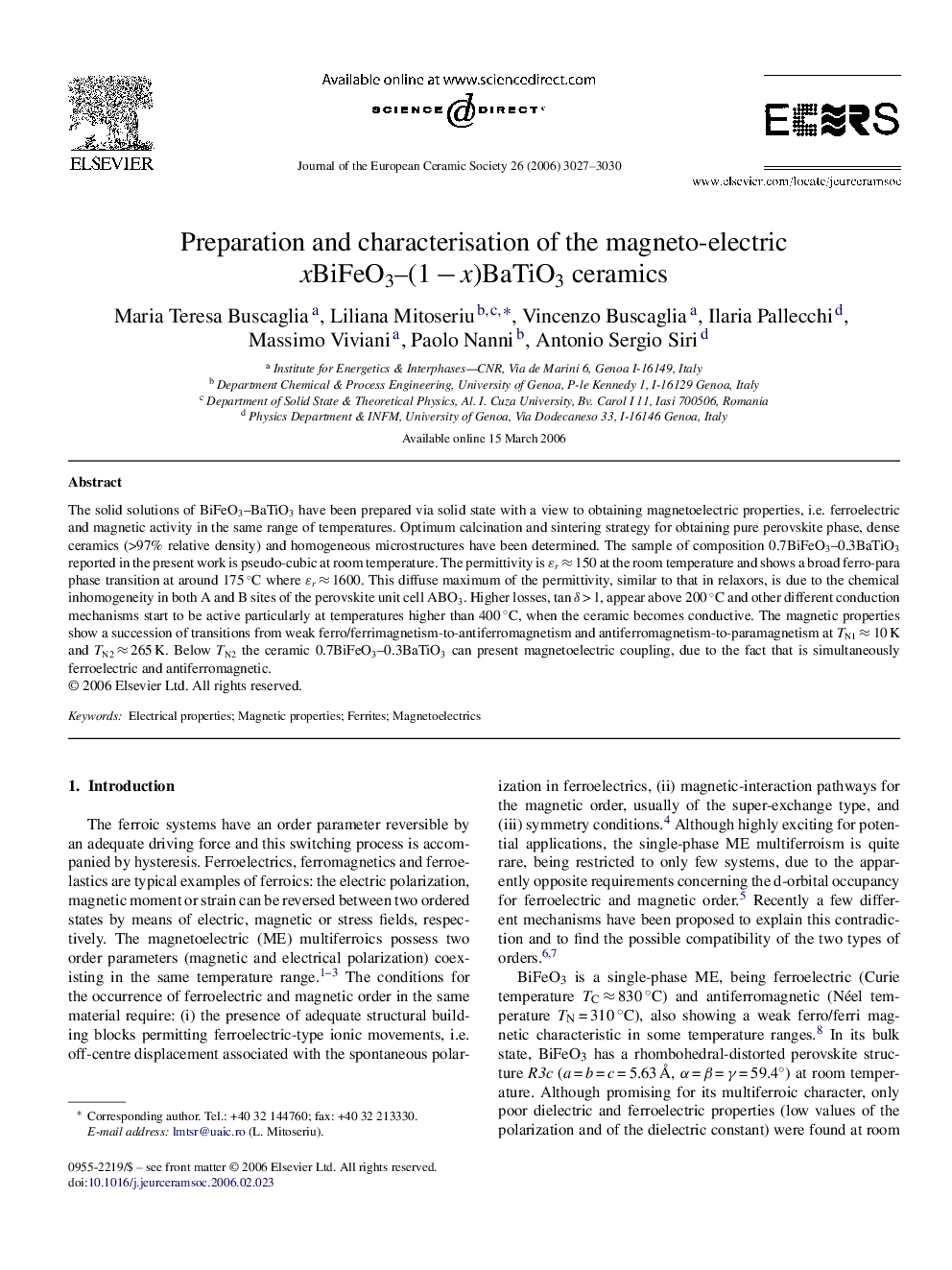| Article ID | Journal | Published Year | Pages | File Type |
|---|---|---|---|---|
| 1477489 | Journal of the European Ceramic Society | 2006 | 4 Pages |
The solid solutions of BiFeO3–BaTiO3 have been prepared via solid state with a view to obtaining magnetoelectric properties, i.e. ferroelectric and magnetic activity in the same range of temperatures. Optimum calcination and sintering strategy for obtaining pure perovskite phase, dense ceramics (>97% relative density) and homogeneous microstructures have been determined. The sample of composition 0.7BiFeO3–0.3BaTiO3 reported in the present work is pseudo-cubic at room temperature. The permittivity is ɛr ≈ 150 at the room temperature and shows a broad ferro-para phase transition at around 175 °C where ɛr ≈ 1600. This diffuse maximum of the permittivity, similar to that in relaxors, is due to the chemical inhomogeneity in both A and B sites of the perovskite unit cell ABO3. Higher losses, tan δ > 1, appear above 200 °C and other different conduction mechanisms start to be active particularly at temperatures higher than 400 °C, when the ceramic becomes conductive. The magnetic properties show a succession of transitions from weak ferro/ferrimagnetism-to-antiferromagnetism and antiferromagnetism-to-paramagnetism at TN1 ≈ 10 K and TN2 ≈ 265 K. Below TN2 the ceramic 0.7BiFeO3–0.3BaTiO3 can present magnetoelectric coupling, due to the fact that is simultaneously ferroelectric and antiferromagnetic.
